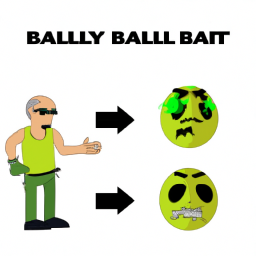Paintball How Bad Does It Hurt
How Bad Does A Paintball Hurt
How Bad Does A Paintball Hurt?
Most of us have watched films or seen images of people getting hit with paintballs and wondered, just how bad does a paintball hurt? Paintball is a popular sport that is enjoyed by thrill-seekers and recreational players alike, but the idea of having a gelatinous sphere of paint explosively against them makes even the most daring pause and consider the potential level of discomfort that a paintball inflicts.
In this article, we will explore the intensity and factors that contribute to the pain experience associated with a paintball, as well as offer tips and precautions that can help to reduce any discomfort should someone become a target of an incoming paintball.
What is a paintball?
A paintball is a spherical, gelatinous capsule filled with a colored oil-based dye surrounding a small, non-metallic, gelatin shell filled with a nitrogen-propelled gas. It has a thin outer skin that breaks on impact, scattering the paint that acts as a visual marker of the projectile's location and impact.
Why is a paintball painful?
Most people, upon first impression, imagine the pain from a paintball to be more painful than it is. In reality, the discomfort of a paintball is similar to having a tight rubber band slash your arm or leg. An incoming paintball moving at approximately 280 feet per second, or 190 mph, can sting slightly upon impact, but rarely causes more than a localized, tense feeling.
Other Factors That Increase Discomfort
The level of discomfort experienced when being hit by a paintball is usually determined by the amount of force the paintball was fired at and the distance from which it was fired. The closer a person is to the gun, the more uncomfortable the experience because the paintball traveling at a higher velocity hits the target with greater force.
The level of discomfort experienced by an individual can also depend on the type of paintball chosen. Some paintballs are filled with more oil, making them more viscous and thereby increased the level of discomfort caused upon impact.
What can be done to reduce the Happening?
Injuries and discomfort can be avoided when playing paintball safely. Following a few simple rules and tips can help to mitigate the amount of pain experienced when hit by a paintball.
Use the right equipment
When playing paintball, it is important to wear protective clothing such as goggles, a padding like a ghillie suit and gloves. In addition, making sure that the guns being used are selection is of the right size, not too heavy or too powerful, can help ensure that safety precautions are met.
Keep the right distance
Keeping the right distance between the shooter and the target can help to reduce the amount of pain felt when hit. Generally speaking, the further away the target is from the shooter, the lower level of pain the target will experience.
Choose the right paintballs
It is important to choose paintballs that are of good quality. Paintballs that are filled with less oil and have a thinner shell are good choices, as they cause less of a sting and internal bruising than thicker or more viscous paintballs.
In Summary
The pain of a paintball is typically no more than a tight rubber band snapping against the player's skin. Factors such as the distance the paintball was fired from, the type of paintball used, and the type of protective clothing worn, all play a role in determining the level of pain experienced by the recipient.
Following safety precautions such as using the right equipment, maintaining the appropriate distance between target and shooter, and selecting quality paintballs can help to ensure that the pain associated with a paintball will be minimal.
Overall, the experience of being hit by a paintball does not have to be uncomfortable. By following a few simple rules and precautions, paintball can be an enjoyable and safe way to have fun with friends.

Previous Page
